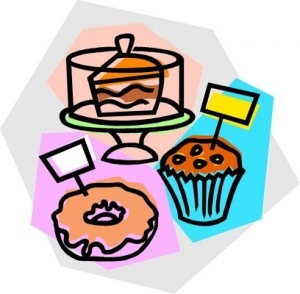 Do you have a clue what the difference is between reduced fat, low fat, light, and fat free. You practically have to walk around with a cheat sheet — or an app — to figure out if something actually lives up to the promise on the product’s label.
Do you have a clue what the difference is between reduced fat, low fat, light, and fat free. You practically have to walk around with a cheat sheet — or an app — to figure out if something actually lives up to the promise on the product’s label.
The same thing is true on menus, in deli cases, and the little labels perched next to the choices in salad bars. Are the calories in the low calorie tuna salad less than the calories in the reduced calorie? Can you even believe those calligraphied labels behind the glass cases?
Checking The List Of Ingredients May Or May Not Help
Packaged food labels list ingredients in descending order by weight, not amount. The first ingredient listed has the greatest amount by weight, the last ingredient is the one with the least amount by weight. That’s why preservatives are usually at the end of the ingredients list. A ton of chemicals are not necessary to increase shelf life — a little bit will do it. However, fat, sugar, and grains have more heft and usually are closer to the beginning of the ingredients list.
Fatty Labels
Labels have to include the total amount of fat, saturated fat and unsaturated fat. This carves the way for the low, reduced, and fat free categories.
- Low fat means 3 grams of fat or less per serving (or per 100 grams of food)
- Reduced fat means the food product contains 50% (or less) of the fat found in the regular version
- Less fat means 25% or less fat than the comparison food
- Fat free means the product has less than 0.5 grams of fat per serving, with no added fat or oil
Salty Labels
- Reduced sodium means at least 75% less sodium
- Low sodium means 140 milligrams of sodium or less per serving
- Very low sodium means 35 milligrams of sodium or less per serving
- Sodium free (salt free) means there is less than 5 milligrams of sodium per serving
Sweet Labels
- Sugar free means there is less than 0.5 gram of sugar per serving
- No sugar added means there’s no table sugar added but there may be other forms of sugar like dextrose, fructose, glucose, sucrose, maltose, or corn syrup
The Low down On Low, Light (Lite), Lean, and Reduced
- Reduced calorie on the label means there’s at least 25% fewer calories per serving than in the regular (full calorie) version of the product
- Low calorie means 40 calories or less per serving and less than 0.4 calories per gram of food
- Light (fat) means 50% or less of the fat than in the regular, full calorie, version
- Light (calories) means 1/3 fewer calories than the regular, full calorie, version
- Lean (meat, poultry or seafood) means less than 10 grams of fat, 4.5 grams of saturated fat, and 95 mg of cholesterol in a 100 gram serving
- Extra lean (meat, poultry or seafood) means less than 5 grams of fat, 2 grams of saturated fat, and 95 mg of cholesterol in a 100 gram serving
Confused???
Confused by the ins and outs of labeling? You’re not alone. Try to be as savvy as possible and do a little investigating. A product sporting a reduced fat label just means that it contains at least 25% less fat than the original version. Unfortunately, this doesn’t necessarily mean that it ends up being a low fat product. Take a reduced fat muffin. If the fat content in the original full fat muffin is 30g and the fat has been reduced to 15g — a 50% reduction which allows it to say it is reduced fat — the reduced fat muffin still has a fat content five times higher than the 3g of fat per serving that officially qualifies as low fat. Check the calorie count and fat breakdown on the nutrition label for more complete info.



